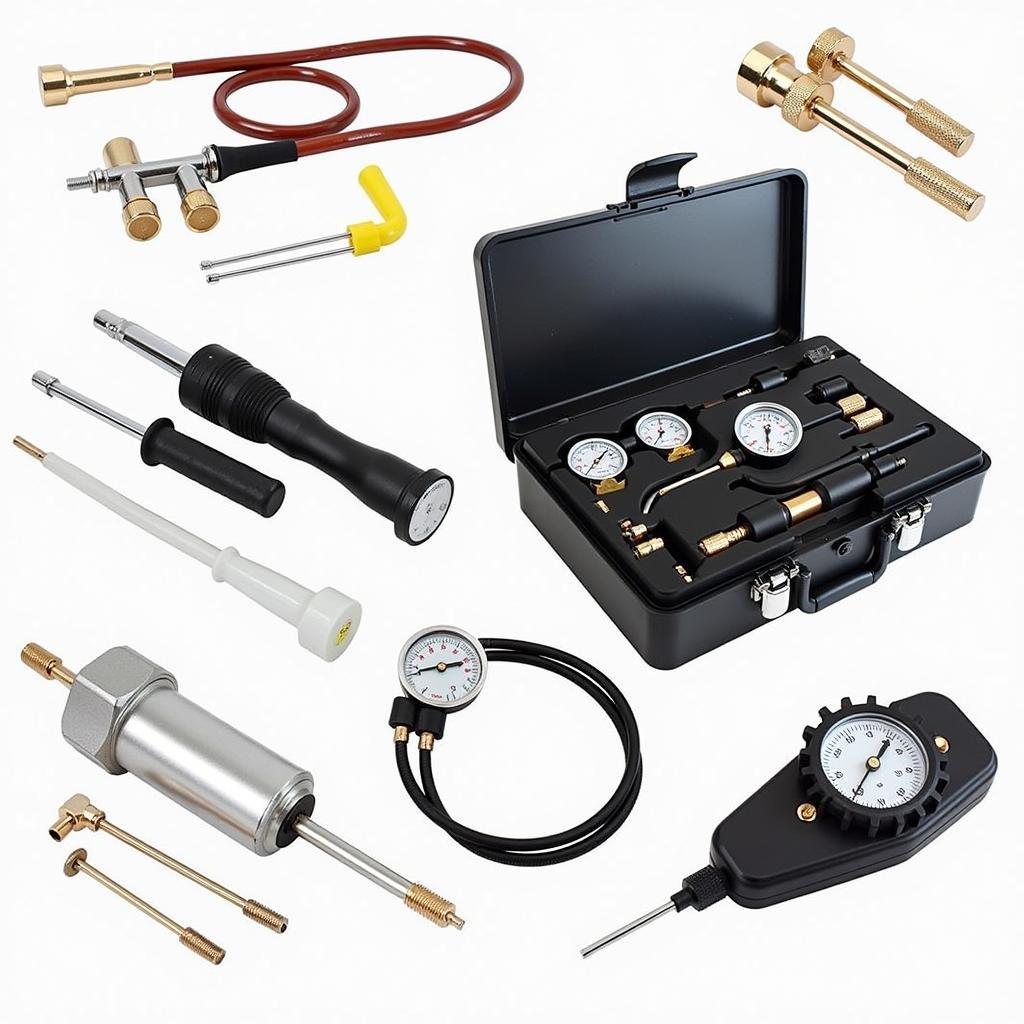Fixing Holes In Car Radiators can be a frustrating experience, but with the right knowledge and approach, it can be managed effectively. This guide provides a detailed look at various methods for repairing radiator leaks, from temporary fixes to more permanent solutions. how to fix a pinhole leak in a car radiator will provide more information.
Understanding Your Car Radiator and Common Leak Locations
Your car’s radiator is a vital component of the cooling system, responsible for dissipating heat from the engine coolant. Leaks can occur due to corrosion, debris impact, or even manufacturing defects. Common leak locations include the radiator core, tanks, hoses, and radiator cap.
Identifying the Leak
Before fixing holes in car radiators, pinpoint the source. Look for visible coolant drips, stains, or white residue around the radiator and connected hoses. A pressure test can confirm leaks and their locations.
Temporary Fixes for Radiator Holes
Temporary fixes can get you back on the road in a pinch, but they are not long-term solutions.
- Radiator Stop Leak: These products seal small leaks by reacting with the coolant to form a plug. They’re easy to use but should be followed by a proper repair.
- Pepper: Believe it or not, black pepper can temporarily seal small leaks. Pour it into the radiator, and it will be drawn to the leak, creating a blockage.
- Epoxy Putty: For larger holes, epoxy putty can provide a temporary seal. Clean and dry the area before applying the putty.
 Applying Radiator Stop Leak
Applying Radiator Stop Leak
Permanent Solutions: Fixing Holes in Car Radiators
For a lasting repair, consider the following methods:
- Soldering: Soldering is a common method for repairing small holes in metal radiators. It involves using a soldering iron to melt solder and create a seal.
- Welding: Welding provides a stronger repair for larger holes or cracks. It requires specialized equipment and expertise.
- Radiator Replacement: If the damage is extensive, replacing the entire radiator might be the most cost-effective solution.
Radiator Repair vs. Replacement
Choosing between repair and replacement depends on the extent of the damage, the age of the radiator, and the cost of each option. A severely damaged or old radiator is usually best replaced. how to fix a coolant leak in your car offers some insights on repairing coolant leaks.
Preventing Future Radiator Leaks
Regular maintenance can prevent future leaks. Flush your cooling system according to your vehicle’s maintenance schedule and inspect the radiator for signs of wear and tear.
“Regular coolant flushes are essential for preventing corrosion and extending the life of your radiator,” says John Smith, Senior Automotive Technician at Smith’s Auto Repair.
Conclusion
Fixing holes in car radiators can range from simple temporary fixes to more involved repairs. Understanding the different methods available will help you choose the right approach for your situation. Ignoring a radiator leak can lead to overheating and engine damage, so addressing the issue promptly is crucial. Contact AutoTipPro at +1 (641) 206-8880 or visit our office at 500 N St Mary’s St, San Antonio, TX 78205, United States for expert advice and assistance with your radiator repair needs.
“Remember, a small leak can quickly become a big problem. Addressing it early can save you time and money in the long run,” adds Jane Doe, Lead Mechanic at Doe’s Auto Services.







Leave a Reply